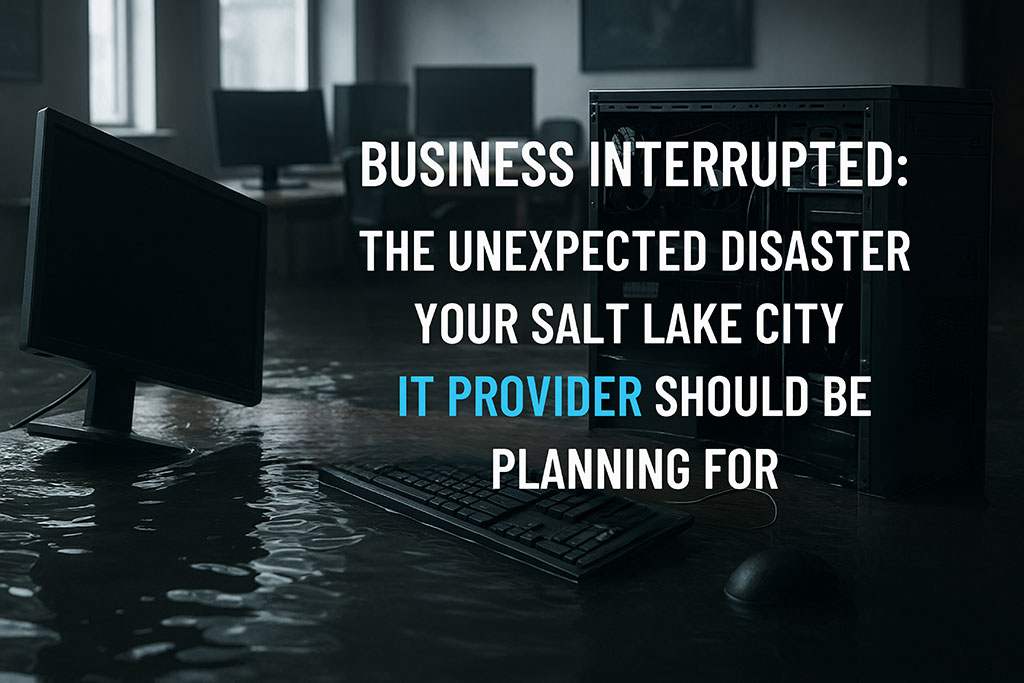
Look, Here’s the Thing…
When your shop floor runs on tight schedules and your ERP connects everything from inventory to shipping, even one hour of downtime can snowball into missed deadlines, angry customers, and stalled revenue. In Salt Lake City’s manufacturing sector, unexpected disasters aren’t "if" but "when."
And while most manufacturers have some kind of data backup, that’s not the same thing as staying operational. If your IT provider can’t keep your machines online, your files accessible, or your remote logins working during a crisis, you’re gambling with your throughput.
Backups Are a Start – But You Need Continuity
Let’s set the record straight: backups matter. But they’re only one piece of a true business continuity strategy. Salt Lake City manufacturers need more than a safety net—they need a proactive, boots-on-the-ground plan that keeps production humming no matter what.
Think about this:
- Your MES server goes down.
- A fire disables your central switch.
- A ransomware attack locks up your scheduling software.
Having a backup won’t help much if you can’t get your team connected, your machines interfaced, or your clients updated.
The Difference Between Backups and Continuity
Here’s where too many Salt Lake manufacturing firms get caught off guard:
- Backups restore your files.
- Continuity restores your operation.
A full business continuity plan answers questions like:
- How quickly can we recover production?
- Can the front office and shop floor access critical tools offsite?
- Who initiates the recovery steps—and how?
- What systems need to come online first?
A solid plan includes:
- Offsite, encrypted, and immutable backups
- Recovery Time Objectives (RTO) and Recovery Point Objectives (RPO) set by operational priority
- Remote access solutions for both engineering and admin teams
- Redundant systems for shop-critical tools
- Quarterly failover and recovery testing
If your IT company can’t walk you through each of these, you’re not disaster-ready—you’ve just been lucky.
Real Events, Real Damage
Let’s not sugarcoat it. Here are real examples that have crippled operations:
- A power surge in West Valley fried a production server. No failover. Two days offline.
- Flooding in South Salt Lake destroyed a server rack. Backups were local. 6 weeks of invoices lost.
- A phishing attack at a composites shop locked down every file tied to their ERP. Their MSP hadn’t tested backups. They paid the ransom.
These aren’t just coastal horror stories. They’re local, and they’re happening more often.
Questions Every Manufacturer Should Ask Their IT Provider
Before another shift starts, ask:
- If ransomware hits, how fast can we resume production?
- Are our backups tested on schedule? Do they include MES and CNC data?
- What’s the plan if a flood shuts down the plant?
- Is our continuity strategy compliant with CMMC, ITAR, or ISO?
- Can my engineers and admin team work from anywhere in a pinch?
If you don’t know these answers—or your current provider can’t give them—it’s time for a serious conversation.
Downtime Isn’t Inevitable. It’s Preventable.
Disasters don’t ask for permission. But that doesn’t mean they get to run the show. With the right plan and a partner who understands manufacturing systems inside and out, you can keep building, shipping, and serving no matter what hits.
And that’s what we do at Qual IT.
Click here to book your FREE Network Assessment with Qual IT.
We’ll map out your vulnerabilities, test your backup integrity, and help you build a continuity strategy that’s as strong as your production floor.



